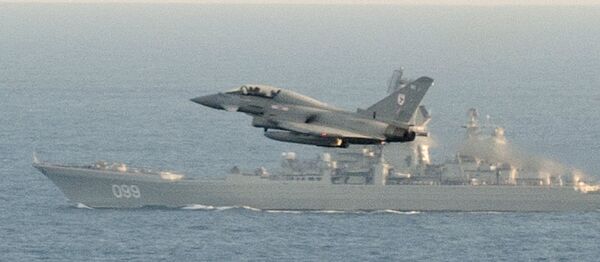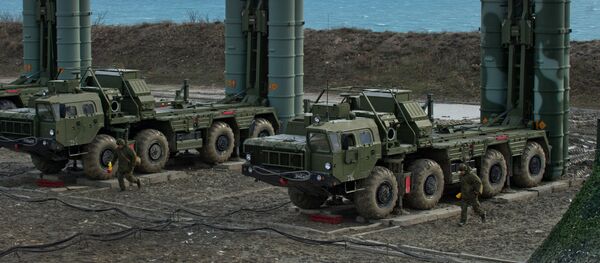At the same time, a separate official noted that the Russian ship is capable of intercepting communications and signals and can also measure "US Navy sonar capabilities." The source said that the ship is also armed with surface-to-air missiles.
This was not the first time the SSV-175 Viktor Leonov has been spotted in the Atlantic and near the US. A year ago, the ship was involved in a joint exercise with the Venezuelan navy. It was also seen in Havana in January 2015.
Routine Activity
Russia places special emphasis on two directions, the Atlantic and the Arctic region. The Atlantic was highlighted in the document due to NATO’s increased military activities and the alliance’s expansion towards Russia’s border.
"Russian naval intelligence ships are constantly present in many remote areas of the World Ocean. They do not carry offensive weapons and pose no threat to any country. They can explore migration of biological resources and the occurrence of mineral resources. At the same time, they can create 'acoustic images' of warships and submarines of the potential enemy," Russian journalist and commentator Alexander Khrolenko wrote in a piece for Sputnik.
Hydrology is another important exploration field. Naval spy ships are involved in updating a hydrologic map of the World Ocean in order to improve the distance and accuracy when detecting enemy ships.
According to information from open sources, the SSV-175 Viktor Leonov is a medium intelligence ship, the seventh of project 864 (NATO reporting name Vishnya Class).
It was commissioned in 1988 with the Russian Northern Fleet. The ship has a displacement of 3,800 tons, a length of 91.5 meters, a beam of 14.5 meters and a draft of 5.6 meters. It can reach speeds of 16 knots and has an operation range of 7,000 miles. The ship has complements of 220 crew members.
The Pentagon is concerned that the Russian navy has been spying on the Kings Bay submarine base in Georgia, the Dover Navy base in Delaware as well as other strategic facilities on the eastern coast of the US.
The Russian ship did not violate any international navigation laws and was moving at a low speed and located a considerable distance from the US coast, according to Igor Nikolaichuk, a senior security analyst at the Russian Institute for Strategic Studies.
"This is a routine intelligence activity and no one is hiding this. The ship was not disguised as a civil vessel. This is routine collection of intelligence data. Almost all countries do this. The Russian ship violated no laws. Why did Fox News turn it into almost a sensation? The Russian topic is very popular in the US now and such news generates good ratings," Nikolaichuk told Radio Sputnik.
'Atmosphere of Suspicion'
The US and NATO also have a fleet of spy ships and some of which have repeatedly been spotted near Russia. For example, the USS Mount Whitney of the US Six Fleet was engaged in exploring the waters of the Black Sea.
The Pentagon is also ramping up aerial intelligence activities near Russia’s border. On February 13, a RC-135W spy plane and a P-8A Poseidon anti-submarine aircraft were on intelligence missions near Kaliningrad region and Crimea.
"Apparently, in order to dismantle the atmosphere of suspicion and boost security, the West first of all needs to give up its anti-Russian posture and stop the NATO eastward expansion," Khrolenko wrote.
According to an analysis by The National Interest military publication, Washington highly overestimates Moscow as the US’ top security threat.
"The public and the government agencies that investigate national security threats […] have a heightened focus on Russia that is not entirely the result of sober analysis. […] While Russia poses a serious espionage threat to the United States, it is just one of many national security concerns. Putting too much effort into watching for a Russian hack might prevent government agencies from detecting other threats," the article read.
According to The National Interest, escalation with Russia "hamstrings the United States on a variety of fronts."
"Russia has a unique opportunity to prevent the United States from taking action in many parts of the world, and it persistently challenges American initiatives to force its way to the negotiating table," the article read.
Never miss a story again — sign up to our Telegram channel and we'll keep you up to speed!







